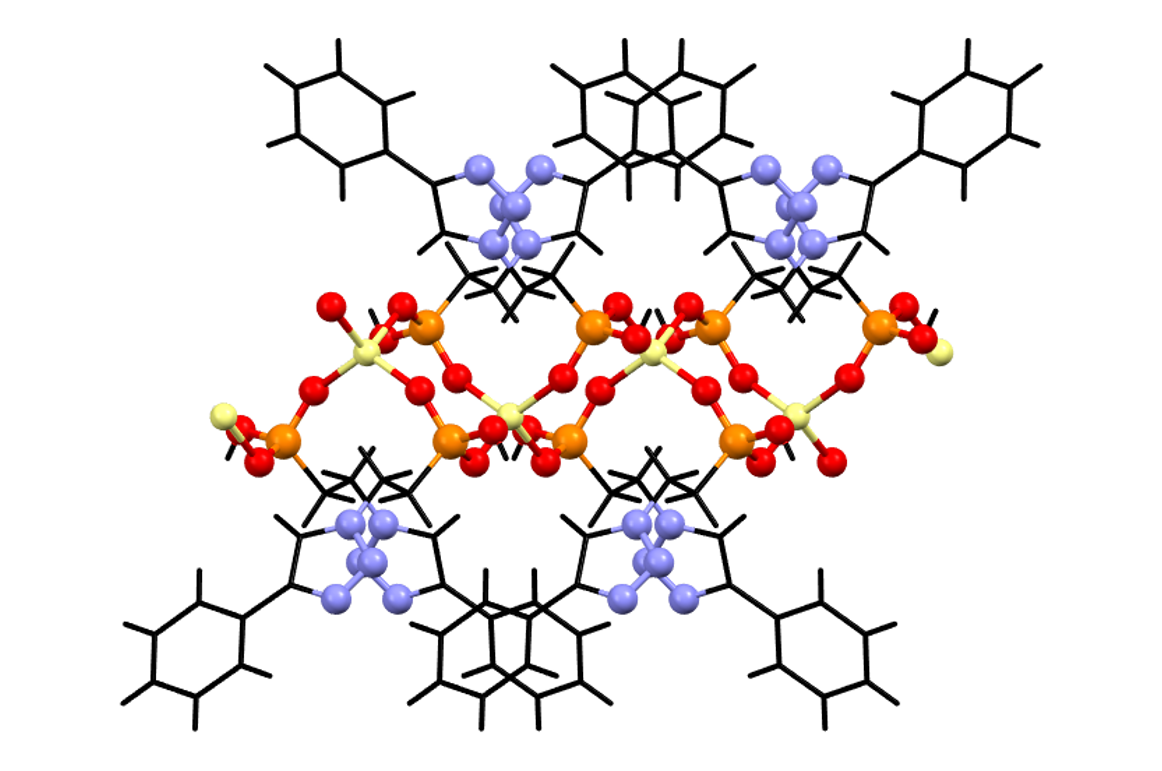“Click” chemistry in the synthesis of phosphonate heterocyclics: The case of 2-(4-phenyl-1H-1,2,3-triazol-1-yl)ethylphosphonic acid and its MOFs
Elpiniki Chachlaki, and Konstantinos D. Demadis
Crystal Engineering Growth and Design Laboratory, Department of Chemistry, University of Crete, Heraklion, Greece
Heterocyclic rings are found in many natural compounds and in the main structure of many biological active scaffolds. They find applications in several scientific and technological sectors, such as biomedicine and paints. Hence, the coexistence of a heterocyclic ring and one (or more) phosphonic moieties on the same molecule, creates an important class of organophosphonic acids linkers that may be useful in the construction of novel MOFs.
One interesting class of heterocyclic rings is one that contains more than one N atoms. In this work we report the synthesis of the new ligand 2-(4-phenyl-1H-1,2,3-triazol-1-yl)ethylphosphonic acid, which contains one triazole heterocyclic ring and one phosphonic group. For the synthesis of this ligand three major steps are involved. First, the ligand diethyl(2-azidoethyl)phosphonate precursor is synthesized with a single Sₙ2 nucleophilic substitution. Then, using “click” chemistry the ligand diethyl 2-(4-phenyl-1H-1,2,3-triazol-1-yl)ethylphosphonate is synthesized. Finally, hydrolysis of the latter is results in the desirable compound, 2-(4-phenyl-1H-1,2,3-triazol-1-yl)ethyl phosphonic acid. The ligand has been fully characterized by ¹H, ³¹P and ¹³C NMR.
Reaction of Zn²⁺ with the ligand 2-(4-phenyl-1H-1,2,3-triazol-1-yl) ethyl)phosphonic acid in aqueous solutions afforded a zinc-phosphonate coordination polymer with the formula Zn[C₁₀H₁₁N₃PO₃]₂. The structurally-characterized compound is a 1D inorganic – organic hybrid, which displays tetrahedral Zn centers bound exclusively by phosphonate O’s, while the triazole moieties remain uncoordinated.

